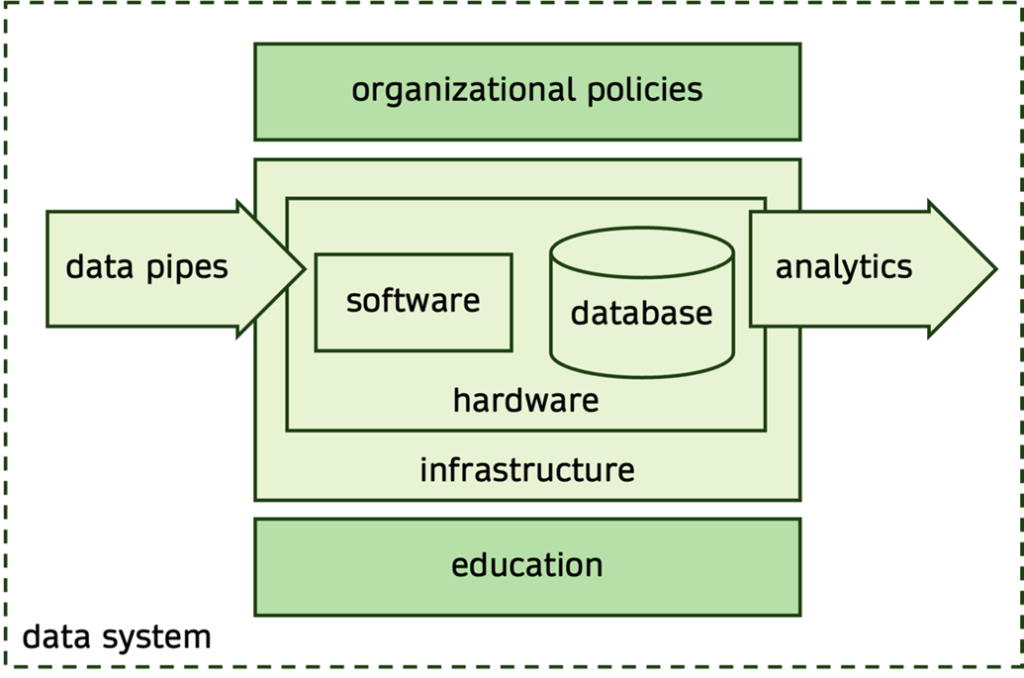This is a guest blog post from one of the DigiSus seed funded projects, “Research initiative for a sustainable data center design and implementation framework”.
Introduction: The digital dilemma
In 2018, data centers accounted for roughly 1% of global energy consumption. By 2030, that figure is projected to rise to a staggering 8%. This growth is driven not only by increasing demand for digital services but also by the explosive rise of resource-intensive technologies like blockchain, large language models, and generative AI. These systems require immense computational power, and their environmental costs, especially in terms of energy and water, are rapidly escalating.
This is no longer a distant concern; it’s a reality unfolding right now. Training a single large AI model can emit as much carbon as five cars over their entire lifetime. Water is diverted in thousands of liters to cool server farms. And yet, sustainability continues to be treated as an afterthought, sidelined in favor of speed, market share, and feature delivery.
The complexity of sustainability in data systems
The technologies we rely on daily such as ChatGPT, Midjourney, digital banking, smart assistants run on systems of staggering complexity. Each one depends on a labyrinth of components: machine learning algorithms, distributed storage networks, scalable compute clusters, and global cloud platforms. The abstraction provided by these platforms hides the true cost of computing, making it feel instant, cheap, and limitless.

But beneath the surface, a sustainable digital infrastructure must reconcile many interdependent layers:
- Software efficiency: from the training routines of AI models to the transaction logic of payment systems, efficient code and model optimization can significantly reduce computational loads.
- Data engineering: how data is stored, moved, cleaned, and accessed affects not just performance but energy usage. Techniques like data pruning, compression, and tiered storage have real sustainability impacts.
- Hardware choices: selecting durable, energy-efficient, and repairable hardware components can extend system life cycles and reduce e-waste.
- Infrastructure design: from modular layouts and passive cooling to siting data centers in regions with access to renewable energy—every design decision matters.
- Organizational policies: encouraging teams to prioritize green design from the outset, and embedding sustainability into tech roadmaps.
In today’s development climate, optimization is rarely prioritized. Once infrastructure is deployed at scale, retrofitting for sustainability is incredibly difficult due to the tight coupling of software, hardware, and system architecture. That’s why this work must begin at the design phase.
A new mindset for a digital future
We aren’t asking society to abandon digital innovation. We’re asking it to evolve. AI, immersive experiences, and global-scale computation aren’t going away. But their environmental toll doesn’t have to grow unchecked.
It’s time to reimagine how digital systems are taught, built, and managed. Educational institutions must integrate sustainable computing into their core curricula. Tech leaders must embrace environmental efficiency not as a tradeoff, but as a long-term asset. Policymakers must understand that regulation can guide innovation toward more responsible outcomes.
A research initiative for sustainable data centers
To address this pressing issue, a new research initiative has been launched to develop a comprehensive framework for sustainable data center design and implementation. This effort is not just about technology. It brings together educators, researchers, and industry leaders from multiple disciplines.
The initiative emphasizes holistic optimization. Studies have shown that properly designed data systems can dramatically reduce the need for energy, computing, and storage hardware. The goal is to promote sustainable thinking across the entire lifecycle of data centers, from hardware and software to infrastructure and organizational policies.
Final thoughts: time for a paradigm shift
The growth of digital technologies is inevitable. But their environmental footprint does not have to be. By rethinking how we design and operate data centers, we can ensure that innovation does not come at the planet’s expense.
This initiative represents more than just a research project but a call to action. A call to educators, companies, and policymakers to recognize that sustainability in computing isn’t optional. It’s essential and your expertise is needed.
Let’s build a digital future that’s not only smart, but also sustainable.
Authors: Tampere University’s Database Systems researchers of the Sustainable Data Centers project supported by DigiSus seed funding.
